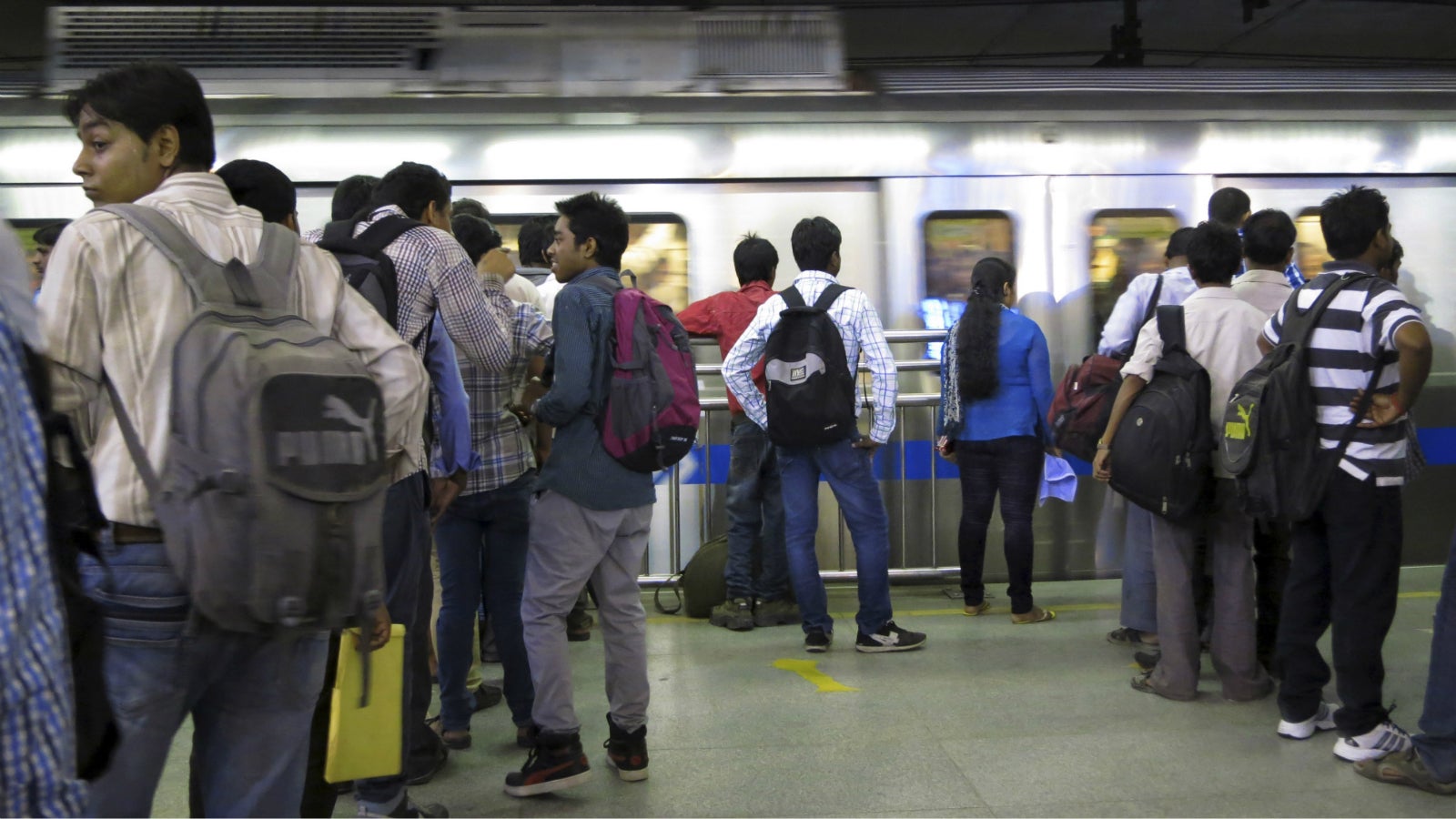Keep calm and carry on: How the Delhi Metro is managing the crowds in these odd-even times
The fight to clean Delhi’s deadly air isn’t just underway on its roads. A battle is also being waged underground.


The fight to clean Delhi’s deadly air isn’t just underway on its roads. A battle is also being waged underground.
For the first fortnight of 2016, Delhi roads are keeping odd- and even-numbered cars off the roads on alternate days. This experiment, the Arvind Kejriwal government hopes, will help curb the Indian capital city’s hazardous level of air pollution.
The first three days of the new year were more or less a success. But since they were holidays, Jan. 4 was the real test of whether Delhi would actually follow the new formula. Consequently, many of Delhi’s two million car owners have been forced to hop onto the city’s fleet of auto-rickshaws, taxi-hailing cabs, and buses—or rely on the Delhi Metro.
For a public transportation system that typically ferries more than 2.5 million people every day, many presumed that the extra load would be hard to handle for the Delhi Metro. A paranoid internet stoked further fears, as old pictures of dreadfully cramped Delhi Metro stations surfaced and recirculated on social media.
Reality, however, was rather different.
At 6 pm on Jan. 4, Rajiv Chowk Metro Station in the heart of New Delhi was heaving. It is anyway one of the Indian capital city’s busiest stations—working as a transfer station between the blue line (consisting of 44 stops, and running from Dwarka to Noida) and yellow (comprising 37 stops, running till Gurgaon).
On any other normal working day, there would be a waiting period of at least two minutes between two trains. But not between Jan. 1 and Jan. 15: Trains were arriving every minute during rush hour. For 15 days, the Delhi Metro Rail Corporation (DMRC), which operates the Delhi Metro, is running 3,192 total trips every day compared to 2,827 trips with its fleet of 198 trains (of six or eight coaches each).
“The frequency of trains and the number of staff have been increased,” Pankaj Thapliyal, a platform in-charge at Rajiv Chowk Metro Station, told Quartz. “Of course, there will be more commuters than usual because you either take the public transport or pay the challan (penalty). People obviously wouldn’t want to pay the challan.“
With the number of daily commuters increasing on the trains, the workload for the DMRC employees has also spiked. ”Every one minute, a metro is entering a platform to handle the rush. And there are mostly eight-coach trains instead of six coaches. So, 60 metros in 60 minutes, and we are on an eight-hour duty,” a security guard, requesting anonymity, told Quartz.
There was at least one security guard deployed outside every coach—to organise commuters in queues, and to streamline their movements. ”We have been given these fluorescent yellow safety pads to wear, so that people can identify us. And that they listen to us,” said Ajay Kumari, a security guard for women’s compartments.
After the morning rush hours, Mangu Singh, managing director of the DMRC, said that the metro was “functioning smoothly.”
“There are more than usual commuters today. There was no place to stand even in the women’s compartment during the morning rush hours,” Sapna Jaggi, who works at the All India Radio, and travels between Subhash Nagar and Patel Chowk, told Quartz. She switches from the blue to the yellow line and vice versa on her working days. “But then, I understand something has to be done about the pollution.”